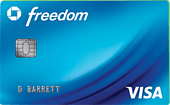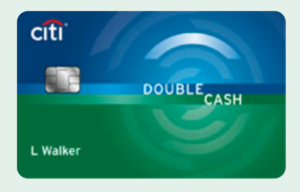The Best No Annual Fee Card from Every Bank
I have been talking about simplifying life a lot lately. One of my main motto’s is “work smarter not harder”. With that in mind I have been trying to clean up my portfolio of credit cards to eliminate some of the hassle that comes with carrying so many that go unused. And it seems like overall credit is something banks are looking at these days. This should also improve my chances of future approvals.
I had said that my plan was to keep one no annual fee card from each bank in order to keep my accounts active. It should also help with my average age of accounts. I thought picking out the best no annual fee card from each major bank would be beneficial for me and our readers. This is focusing on personal cards only. I will do the same thing for business cards.
These are also great options for downgrades when you annual fee comes due.
List of Cards
I will put these in alphabetical order by bank. The list is as follows:

American Express
American Express has the best portfolio of no annual fee cards. The no fee Hilton card, which sometimes gets upgrade offers, or the Blue Cash card are a few examples. I ended up settling on the American Express Everyday Card. It comes with the following earning structure.
- 2 points per dollar at supermarkets
- 1 point per dollar everywhere else
- Get 20% more points after 20 purchases per billing cycle (that works out to 2.4 points and 1.2 points per dollar)
I chose this as the best option since it earns Membership Rewards points. This is the only personal card, without a fee, that earns transferable Membership Rewards points. You can close down a Membership Rewards earning card with an annual fee and not have to worry about losing your points.
Click Here to compare this card and other travel rewards credit cards
Bank of America
Bank of America has slim pickings when it comes to good no annual fee cards, especially with the death of the Better Balance Rewards card. The best option is probably the Travel Rewards card, especially when paired with banking status. The Travel Rewards card earns a flat 1.5% back on every purchase which can be used to erase travel charges.
If you have a checking account that rate gets increased by 10% for a return of 1.65%. Depending on your balance in you bank account(s) you can get a 25% or 75% increase in return. That is a maximum value of 2.625% which is the best return there is for a no annual fee card. It does take a large deposit with Bank of America to get those rates so it isn’t reachable for everyone. Merrill Lynch retirement accounts do count towards this figure.

Barclays
The best card from Barclays is their newest card – the Uber co-branded card. The card has the following earning structure:
- 4% on restaurants
- 3% back on airfare, hotels, and vacation home rental
- 2% on online purchases including Uber, online shopping, video and music streaming
- 1% on everything else
This may be the best no annual fee card for the majority of people. It hits a lot of the major spending areas and I have been tempted by that 4% cash back on restaurant spend since I don’t have a Chase Sapphire Reserve.

Capital One
Capital One, like Barclays, recently released a card which is their best no annual fee card. The Savor Rewards credit card offers a good return for two of the larger spend areas in most people’s budget. The earning structure is as follows:
- 3% cash back on dining
- 2% on groceries
- 1% on all other purchases

Chase
Chase has a few options to choose from but I went with the Chase Freedom card, the one card everyone should get! The Chase Freedom has rotating 5% cashback categories where you can earn 5% cash back up to $1500 in purchases every quarter. These change quarterly but are usually high spend areas, like groceries and gas.
The real value of this card is when you combine it with a premium Chase card like the Chase Sapphire Reserve. Once you transfer your Freedom points to your Sapphire Reserve card the points become transferable which greatly increases their value.
CLICK HERE to compare this and other credit cards
Citi
Citibank has a few different no annual fee options but the best is easily the Double Cash card. The Double Cash is a strict 2% cash back card which earns 1% when you make the purchase and an another 1% when you pay off the charge. If you pay your balance in full before the statement closes you will get the full 2% each month.

Discover
Discover only offers no annual fee cards and they come with quite a few nice perks like Discover Alerts and others that many people don’t know about. The Discover it Miles and it’s 3% cash back the first year deserves high consideration but I went with the Discover It’s 5% rotating cash back categories since they go on past the first year. The set up is the same as the Chase Freedom card where you earn 5% cash back on the first $1500 in spend each quarter on rotating categories.
US Bank
US Bank doesn’t have a large credit card portfolio but their best card no annual fee card is the Cash+ card. The Cash+ is very similar to the Chase Freedom except it gives you options each quarter which you get to choose a 5% category and a 2% category. The 5% category is limited to $2000 in spend per quarter.
Conclusion
Those are my choices for the best no annual fee card at each bank. I tried to hit the major banks. Let me know what you think the best no annual fee card is for each bank in the comments. Remember that this are choices for the long term not for short term gain. I will hopefully have a business card version done soon.
Do you agree with my choices or would you go a different route?







In the last year I converted 3 fee cards to NF ones on your list in order to keep the acct opening dates. Letting the chips fall where they may & deal ltr w recon if necessary.
All good choices, Mark! Seems you are looking strictly at standalone value, however, or the Chase Freedom Unltd should be on the list at 1.5 (but 2.25 w CSR).
It would be helpful if Chase gave out guidelines for what “too much” overall credit means to them. Doesn’t appear they are indicating on the rejection letters they are sending out.
Haphazardly closing accounts to achieve some phantom number or standard doesn’t seem prudent, either, because a sudden volume of closed accts by the consumer doesn’t help a credit score. As well as utilization & length of credit history.
Do you have any somewhat reliable DPs on Chase’s criteria? Hard to know how to manage a credit profile these days when on the one hand it’s positive to have an established history but then dinged on the other for too much of a good thing!
Yeah I picked the regular Freedom over the CFU because I think it is a better earner for the majority of people and easier to rack up UR for non big spenders.
I would think keeping overall credit limits (from all banks) to around 1.5 times stated income would be a good place to start but that is just a guess on my part.
This is a great list of no fee cards from the major finance companies. On a side note, just for fun, if any reader likes to visit Las Vegas, there are a couple of no fee cards for each of the major casino groups – Harrahs/Caesars and MGM. The Total Rewards Visa offered by Comenity Bank offers 5x Resort Credits (5%) for spending at any of the casino resorts (room, dining, bar, etc.); 2x for gas, groceries and airlines. Resort Credits can be redeemed at any of the resorts to pay for meals (buffet anyone), rooms, etc. MGM’s mLife Rewards Mastercard offered by First Bank are earns 3 points plus 3 Tier Credits for spending at MGM resort locations (e.g. Bellagio, MGM Grand, Aria, Mirage, etc.); 2 points+ 2 Tier Credits for gas and groceries; 1 point + 1 Tier Credit for other spending. Points can be redeemed at mLife resorts for rooms, meals, etc. Tier Credits contribute to earning elite status in the mLife loyalty program. You get mLife Pearl status just for owning the card. Both cards offer signup bonuses worth $100 for spending of $750/$1000 in first three months.